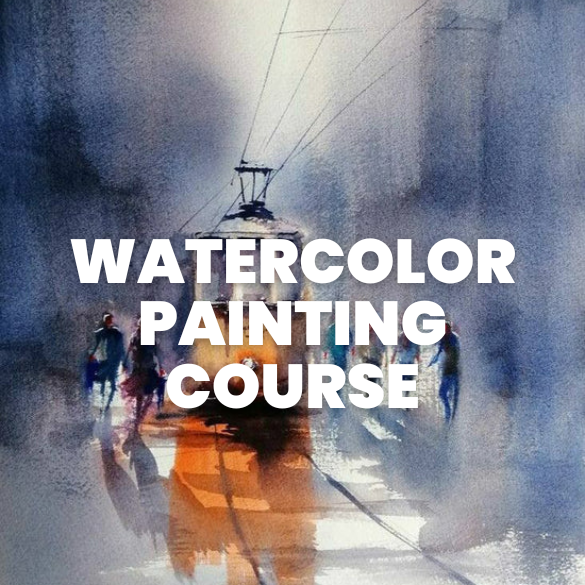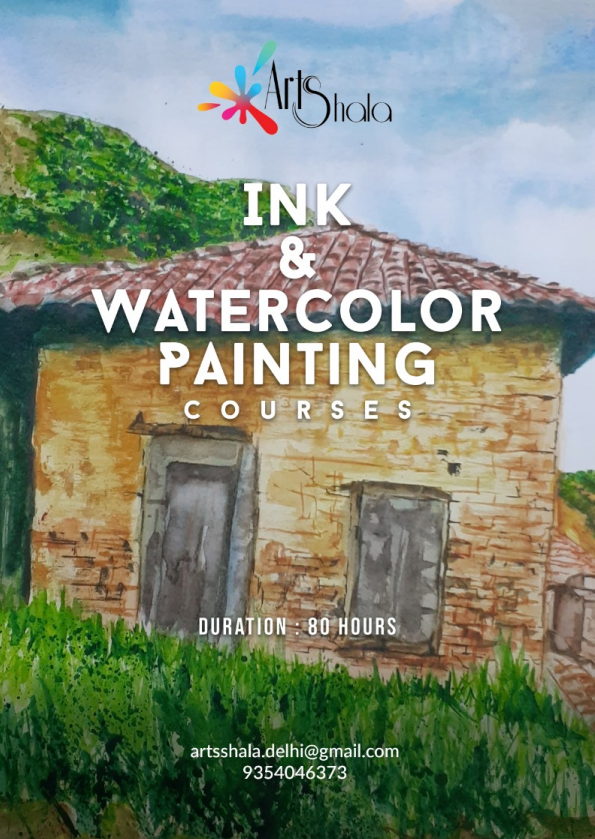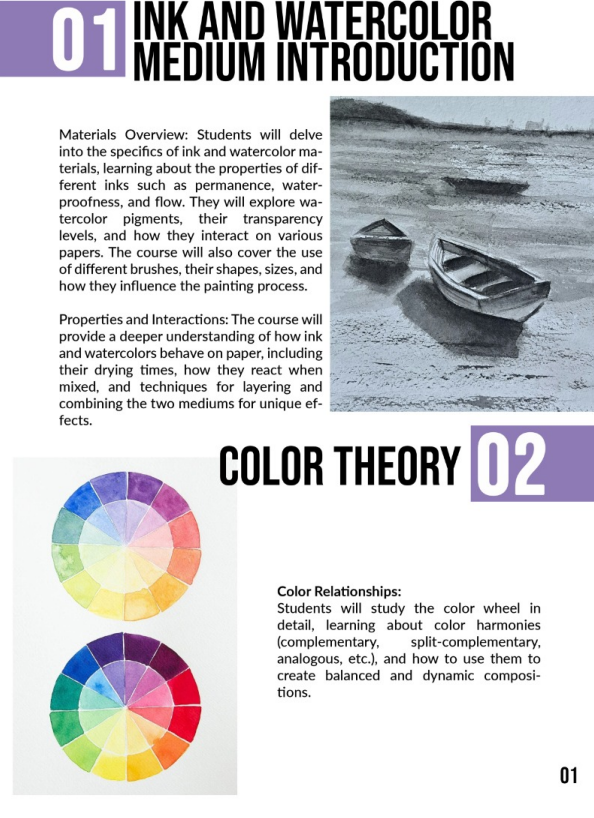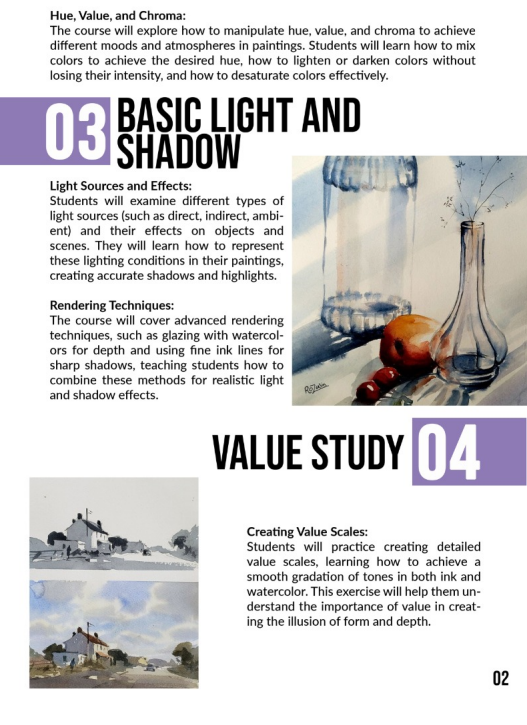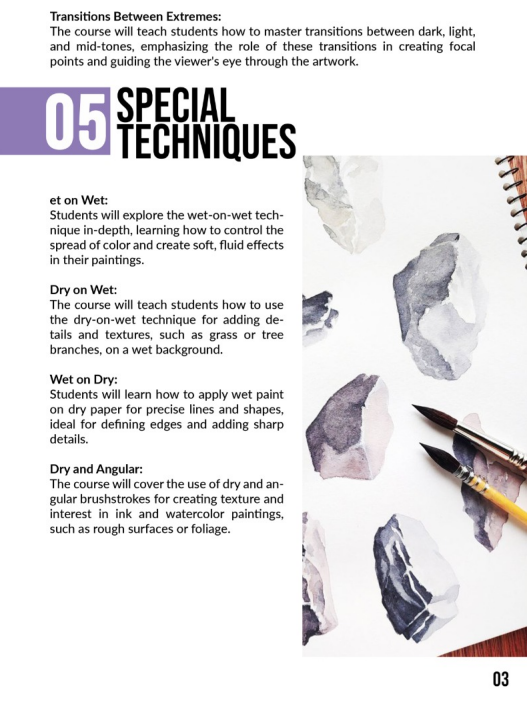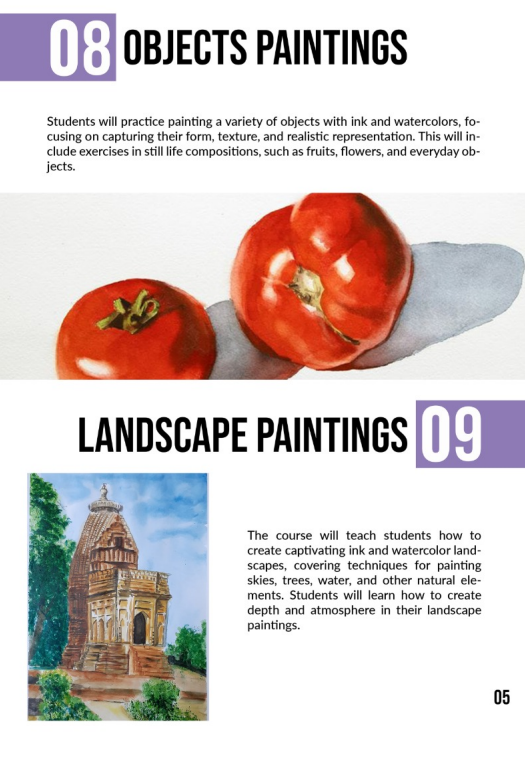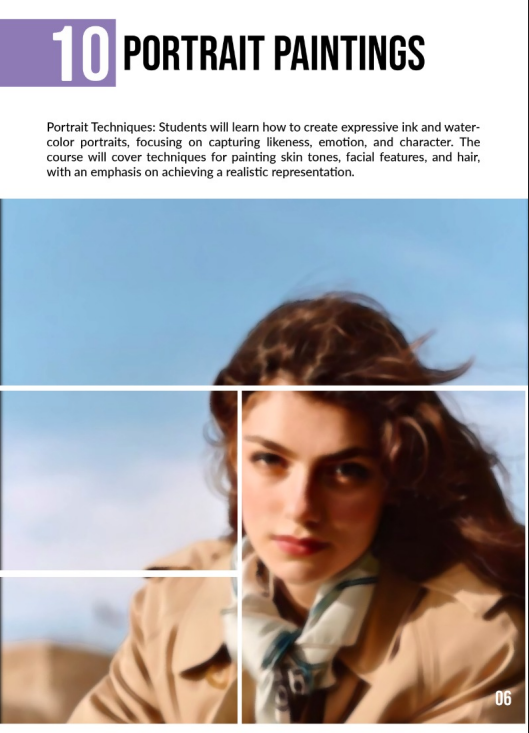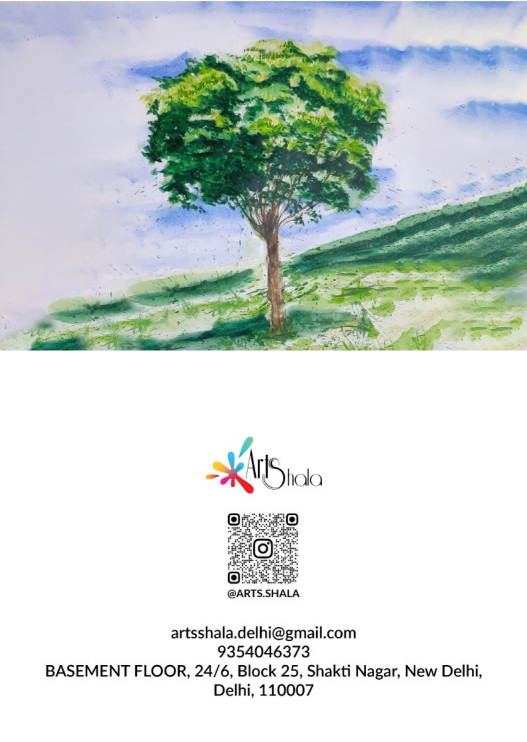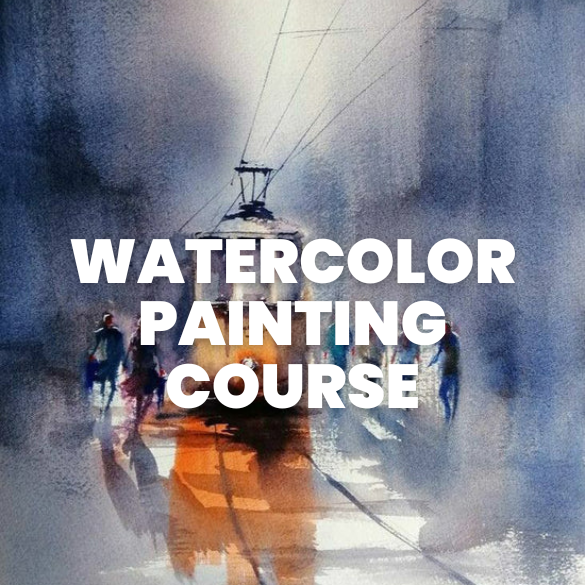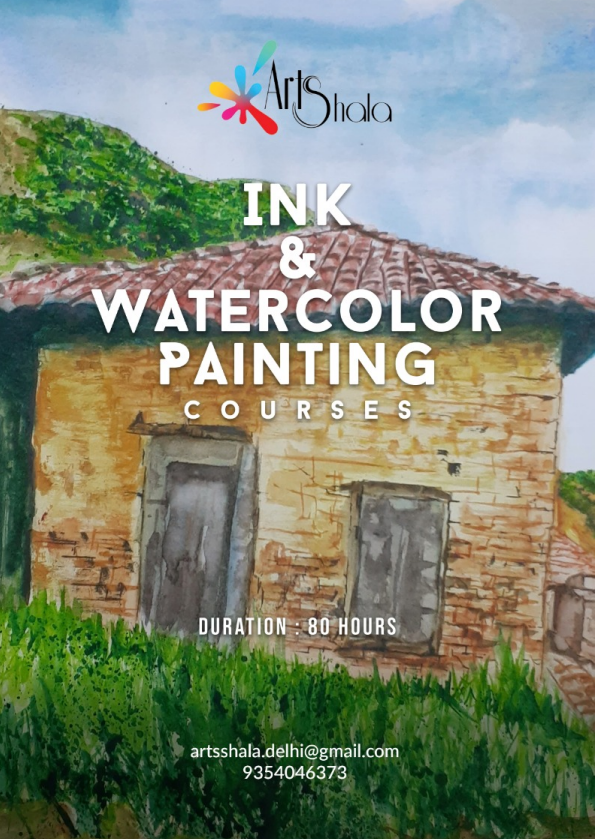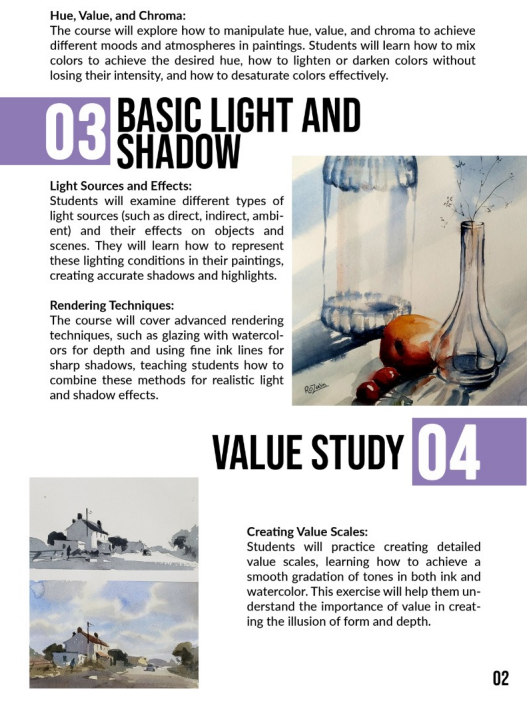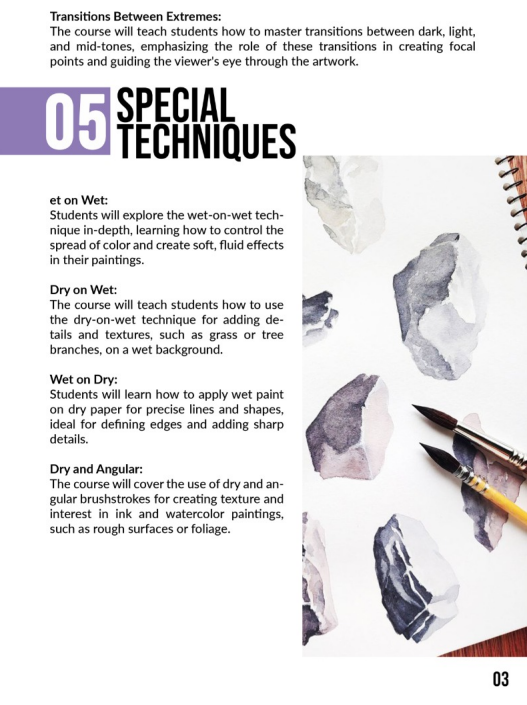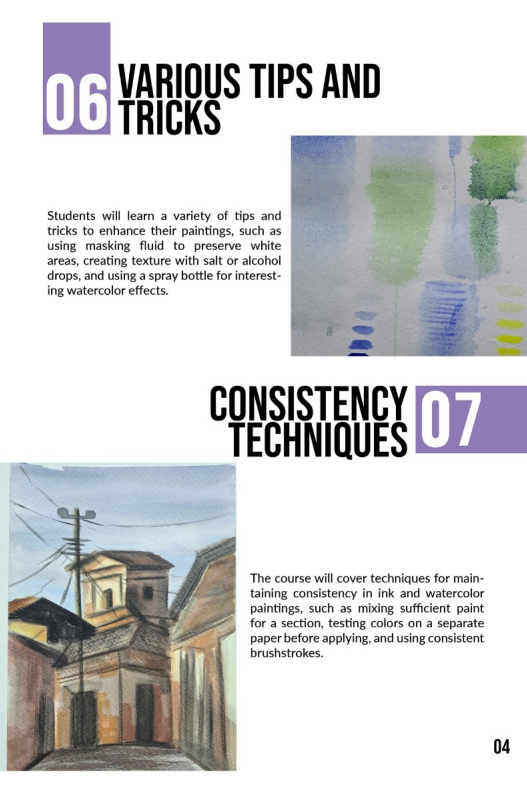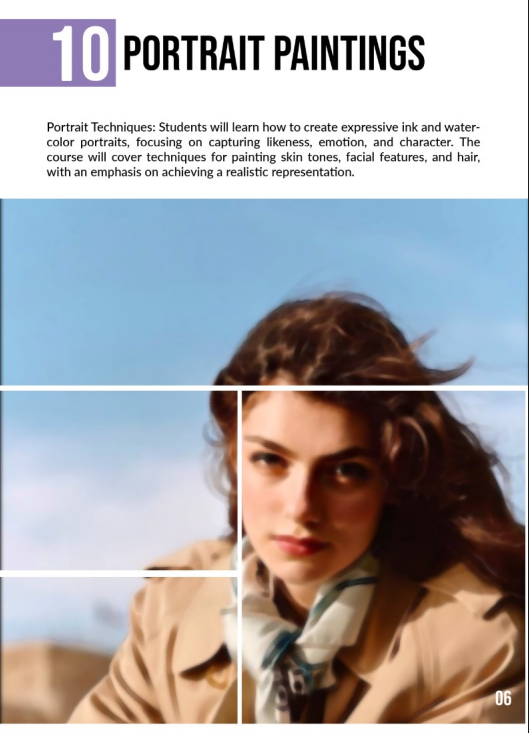What the Course Includes:
Ink and Watercolor Medium Introduction
Materials Overview: Students will delve into the specifics of ink and watercolor materials, learning about the properties of different inks such as permanence, waterproofness, and flow. They will explore watercolor pigments, their transparency levels, and how they interact on various papers. The course will also cover the use of different brushes, their shapes, sizes, and how they influence the painting process.
Properties and Interactions: The course will provide a deeper understanding of how ink and watercolors behave on paper, including their drying times, how they react when mixed, and techniques for layering and combining the two mediums for unique effects.
Color Theory
Color Relationships: Students will study the color wheel in detail, learning about color harmonies (complementary, split-complementary, analogous, etc.), and how to use them to create balanced and dynamic compositions.
Hue, Value, and Chroma: The course will explore how to manipulate hue, value, and chroma to achieve different moods and atmospheres in paintings. Students will learn how to mix colors to achieve the desired hue, how to lighten or darken colors without losing their intensity, and how to desaturate colors effectively.
Basic Light and Shadow
Light Sources and Effects: Students will examine different types of light sources (such as direct, indirect, ambient) and their effects on objects and scenes. They will learn how to represent these lighting conditions in their paintings, creating accurate shadows and highlights.
Rendering Techniques: The course will cover advanced rendering techniques, such as glazing with watercolors for depth and using fine ink lines for sharp shadows, teaching students how to combine these methods for realistic light and shadow effects.
Value Study
Creating Value Scales: Students will practice creating detailed value scales, learning how to achieve a smooth gradation of tones in both ink and watercolor. This exercise will help them understand the importance of value in creating the illusion of form and depth.
Transitions Between Extremes: The course will teach students how to master transitions between dark, light, and mid-tones, emphasizing the role of these transitions in creating focal points and guiding the viewer's eye through the artwork.
Special Techniques
Wet on Wet: Students will explore the wet-on-wet technique in-depth, learning how to control the spread of color and create soft, fluid effects in their paintings.
Dry on Wet: The course will teach students how to use the dry-on-wet technique for adding details and textures, such as grass or tree branches, on a wet background.
Wet on Dry: Students will learn how to apply wet paint on dry paper for precise lines and shapes, ideal for defining edges and adding sharp details.
Dry and Angular: The course will cover the use of dry and angular brushstrokes for creating texture and interest in ink and watercolor paintings, such as rough surfaces or foliage.
Various Tips and Tricks
Students will learn a variety of tips and tricks to enhance their paintings, such as using masking fluid to preserve white areas, creating texture with salt or alcohol drops, and using a spray bottle for interesting watercolor effects.
Learn How to Maintain Consistency.
Consistency Techniques
The course will cover techniques for maintaining consistency in ink and watercolor paintings, such as mixing sufficient paint for a section, testing colors on a separate paper before applying, and using consistent brushstrokes.
Objects Paintings
Students will practice painting a variety of objects with ink and watercolors, focusing on capturing their form, texture, and realistic representation. This will include exercises in still life compositions, such as fruits, flowers, and everyday objects.
Landscape Paintings
The course will teach students how to create captivating ink and watercolor landscapes, covering techniques for painting skies, trees, water, and other natural elements. Students will learn how to create depth and atmosphere in their landscape paintings.
Portrait Paintings
Portrait Techniques: Students will learn how to create expressive ink and watercolor portraits, focusing on capturing likeness, emotion, and character. The course will cover techniques for painting skin tones, facial features, and hair, with an emphasis on achieving a realistic representation.


